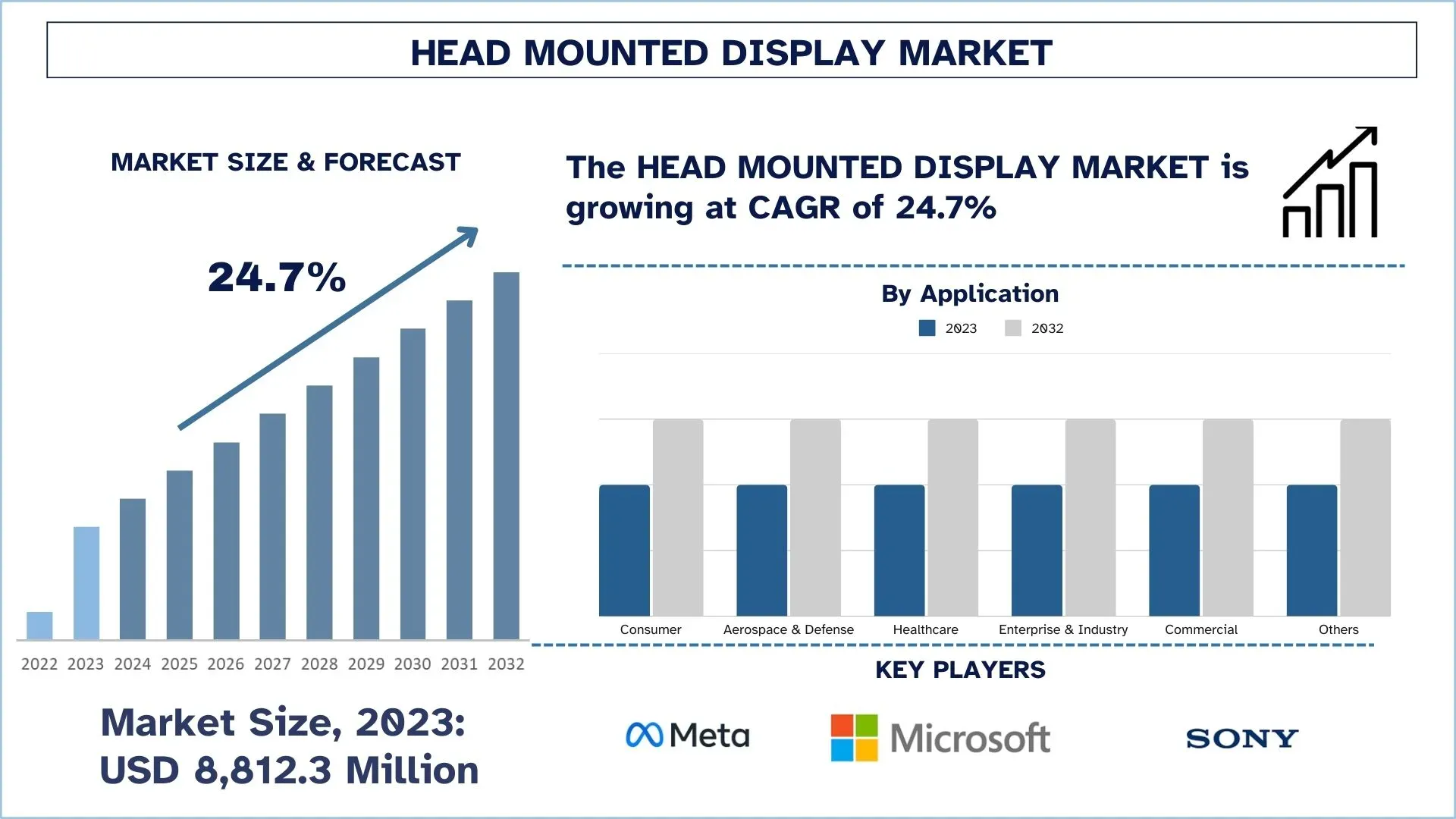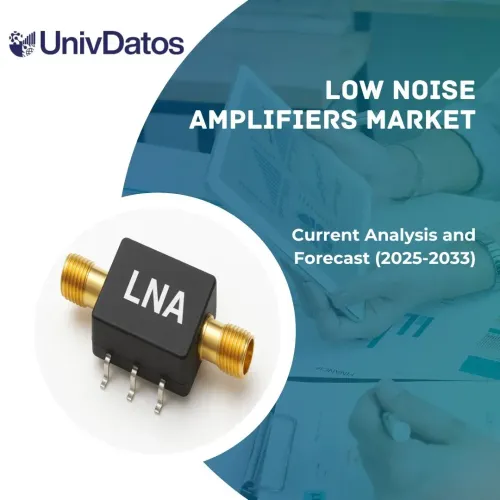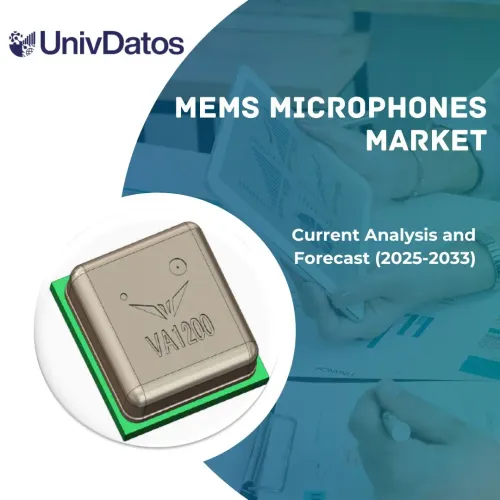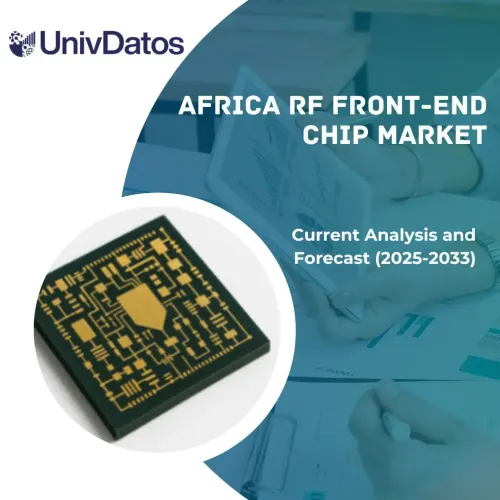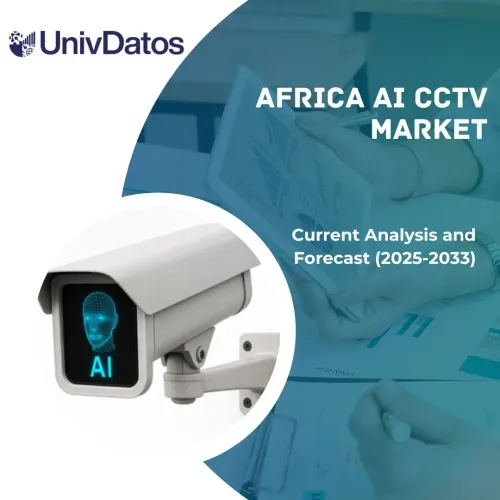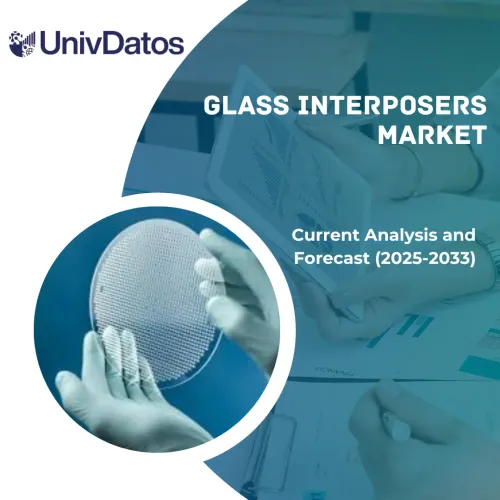- Home
- About Us
- Industry
- Services
- Reading
- Contact Us
Head Mounted Display Market : Current Analysis and Forecast (2024-2032)
Emphasis on Technology (Augmented Reality and Virtual Reality); Application (Consumer, Aerospace & Defense, Healthcare, Enterprise & Industry, Commercial, and Others); Component (Display, Processors & Memory, Sensors, Lenses, Controllers, and Others); Region/Country
Head Mounted Display Market Size & Forecast
The head mounted display market was valued at USD 8,812.3 Million in 2023 and is expected to grow at a robust CAGR of around 24.7% during the forecast period (2024-2032), owing to the increasing demand for immersive AR/VR experiences across gaming, healthcare, education, and industrial applications.
Head Mounted Display Market Analysis
Devices worn on the head, or fit into helmets, offering users immersive experience in virtual reality (VR), augmented reality (AR), or mixed reality (MR) are included in the Head Mounted Display (HMD) market. Applications range across gaming, healthcare, education, enterprise, military, and entertainment sectors for these devices. The main driver of such a market is the increasing demand for immersive gaming experiences, quick adoption of AR/VR technologies in enterprise-based applications, new display technologies such as OLED and Micro LED, and the growing deployment of 5G networks that facilitate AR/VR experience connectivity. Government initiatives and private sector investments in AR/VR are accelerating the HMD adoption in industrial training, virtual collaboration, remote healthcare, and others.
Among the fastest-growing markets for HMDs are countries such as China, India, and South Korea. Its strong manufacturing ecosystem, fueled by its strong manufacturing ecosystem, government support for AR/VR innovation and adoption in gaming and industrial training, drives its growth. It is on record that India is emerging as a key market for us, given its blossoming tech-savvy people, affordable smartphone penetration, and growing adoption of AR/VR for education and remote training. The standout is its development, including 5G infrastructure, enabling a very seamless VR experience, and the leadership in technology innovation, especially gaming. Due to the rapid enrichment of the AR/VR ecosystems from these countries and their consequent growth rate of the global HMD market in the years to come.
Head Mounted Display Market Trends
This section discusses the key market trends that are influencing the various segments of Head Mounted Display as identified by our team of research experts.
Government Policies Supporting the Head-Mounted Display Industry
Government actions and decisions heavily influence the development and distribution of the Head Mounted Display. Key policy areas include:
Subsidies and Grants for AR/VR Development: Countries like China, the USA, and South Korea are all supporting AR/VR research and innovation through subsidies and grants provided to the governments of the world.
Tax Incentives for Technology Adoption: Several governments around the world have created tax incentives to attract companies that invest in AR/VR technologies for industrial applications, and as a result, HMDs are being adopted on scale in industries like manufacturing and healthcare.
Funding for AR/VR Startups: India's 'Digital India' and South Korea's 'Digital New Deal' are both taking the route of funding AR/VR startups to spur technological growth and innovation that will power immersive solutions.
Integration of AR/VR in Education: Governments are rushing to incorporate AR/VR into educational curricula to make learning both fun and more productive.
Defense and Military Investments: Under their defense modernization programs, countries like the United States and Israel are investing very heavily in AR/VR-enabled HMDs for military training, simulation, and operational use.
5G Infrastructure Expansion: In Asia-Pacific, Europe, and North America, governments are pushing ahead with their 5G network rollout, which is critical to delivering AR/VR experiences seamlessly through HMD.
Safety and Quality Regulations: The FDA in the United States is developing AR/VR regulatory standards for the medical use of HMDs to protect the safety and quality compliance of AR/VR HMDs used by patients.
Collaborative Research Initiatives: The European Union’s Horizon 2020 fund helps programs such as collaborating on AR/VR projects to further HMD technologies and their application in various industries.
Promotion of Smart Manufacturing: AR/VR encouraged by policies such as China’s ‘Made in China 2025’ and Germany’s ‘Industrie 4.0’ supports smart manufacturing and industrial training through the adoption of HMD in these fields.
Support for Local Manufacturing: Some governments provide incentives to become local HMD unit manufacturers to reduce dependency on imports and promote domestic manufacturing.
Head Mounted Display Market Segmentation
This section provides an analysis of the key trends in each segment of the global head-mounted display market report, along with forecasts at the global, regional, and country levels for 2024-2032.
The Virtual Reality Market Dominates the Head Mounted Display Market.
Based on technology, the head-mounted display market is bifurcated into augmented reality and virtual reality. The virtual reality market acquired a majority share in the head mounted display market and is expected to highlight a substantial growth rate during the forecast period. The main reason for the growth of Virtual Reality (VR) is the demand for immersive experiences in games and entertainment, as well as training segments. The gaming industry has had a revolution thanks to VR (virtual reality): players have the chance to play in highly interactive, lifelike environments using top-end headsets like Meta Quest, PlayStation VR, or HTC Vive. However, VR is being used beyond gaming: Educators and healthcare professionals alike are using VR for simulation-based training through which medical students and professionals can practice procedures in a virtual environment. Enterprise also gives growth from the use of VR for remote collaboration, product prototyping, and employee training. Additionally, more advancements in VR technology, including higher resolution displays, better motion tracking, as well as less latency on 5G networks are broadening the adoption of VR while improving user experience. The VR segment continues to progress with this combination of consumer and enterprise applications.
The Consumer Segment holds the Largest Share of the Head-Mounted Display Market.
Based on applications, the head-mounted display market is divided into consumer, aerospace & defense, healthcare, enterprise & industry, commercial, and others. The consumer segment is expected to highlight a substantial growth rate during the forecast period. The surge in demand for immersive gaming and entertainment experiences is the main force responsible for the growth of the consumer segment in the Head Mounted Display (HMD) market. Virtual reality (VR) and augmented reality (AR) have changed how consumers play with digital content: immersive environments with fractal graphical designs that allow users to interact with fully lifelike, interactive worlds. Popular devices include Meta Quest, PlayStation VR, and HTC Vive, which are commonly popular because of their advanced feature, price, and moving content library. Furthermore, the increasing incorporation of HMDs with streaming services, fitness apps, and social platforms has expanded the target market beyond gaming, as well as demographics across each of these demographic verticals. The development of device technology, including advances in display resolution, motion tracking, and standalone capabilities, has made these devices increasingly attainable and attractive, resulting in robust growth in the consumer market.
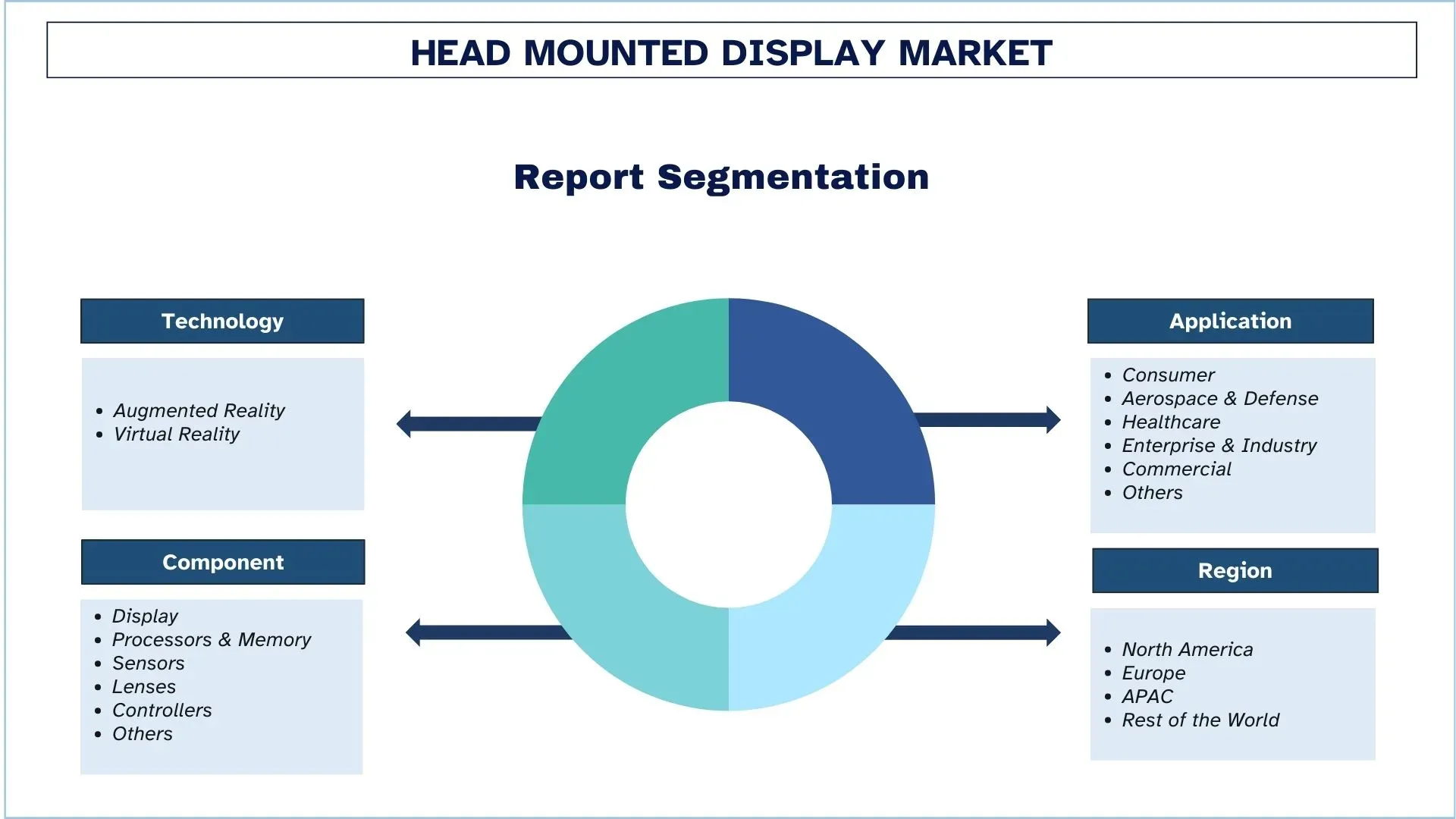
APAC is Expected to Grow with a Significant CAGR During the Forecast Period
Emerging as a leading market for Head Mounted Displays (HMDs), the Asia-Pacific (APAC) region has benefited from growing MDR, consumer demand for amazing experiences, and its use in the industry. Important countries that contribute are China, Japan, South Korea, and India, with China on top in the manufacturing and adoption space, as they have the driving power because China is strong in production and supports AR/VR innovations in the government. Both Japan and South Korea have benefited from advanced 5G infrastructure, leading to applications in the fields of gaming, healthcare, and enterprise training. At the same time, India's expanding tech-savvy population and rising use of AR/VR in education and remote training are also beefing up demand. Given a mixed bag of consumer and enterprise applications, spending on favorable government policies, and high investments in AR/VR technologies, APAC will become the key region for the development of the HMD market.
China holds the APAC Head-Mounted Display Market
Head Mounted Display technology in Mainland China is expanding at a significant rate due to increased market demand among gaming players as well as healthcare institutions and educational organizations, and manufacturing industries. The market advances through the increased use of virtual reality (VR) and augmented reality (AR) technologies because this technology enables HMDs to provide intensive experiences, which improve user engagement levels. Enhancements in HMD technology production now include lightweight designs and improved resolution with better comfort features which drive larger consumer and business market acceptance. Market expansion is supported by the Chinese government through both emerging technology backing and research development funding initiatives. The China HMDs market will experience progressive growth because of increasing demand for innovative solutions across the entertainment and training sectors, together with the remote assistance fields.
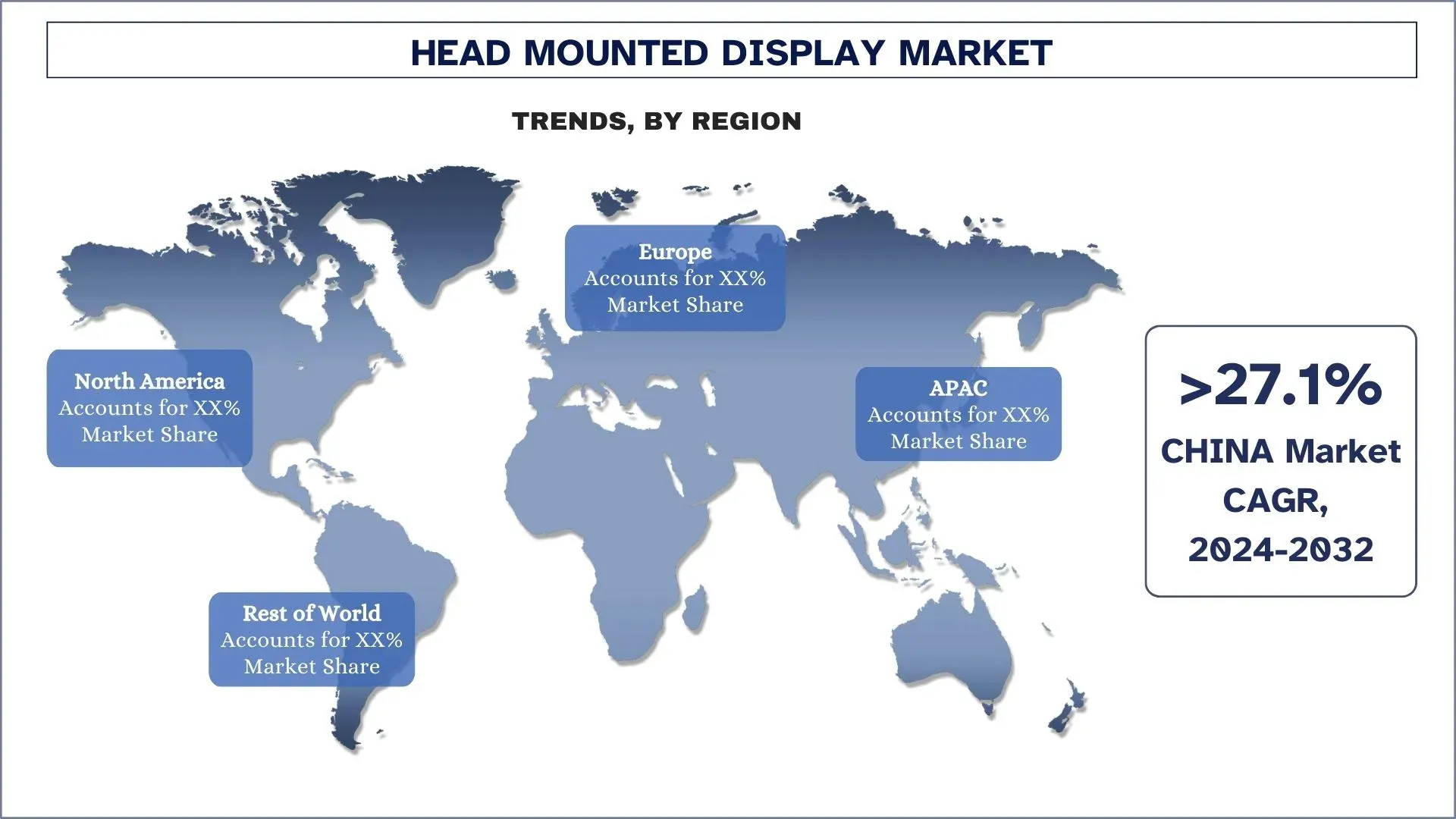
Head Mounted Display Market Overview
The Head Mounted Display market is competitive and fragmented, with the presence of several global and international market players. The key players are adopting different growth strategies to enhance their market presence, such as partnerships, agreements, collaborations, new product launches, geographical expansions, and mergers and acquisitions. Some of the major players operating in the market are Meta Platforms, Microsoft Corporation, Sony Group Corporation, Magic Leap, Inc., Seiko Epson Corporation, Samsung Electronics Co., Ltd., HTC Corporation, Pico Technology Co., Ltd., DPVR, and Vuzix Corporation.
Recent Developments in Head-Mounted Display Market
In November 2024, Teledyne Technologies agreed to acquire select aerospace and defense electronics businesses from Excelitas Technologies for $710 million in cash. The acquisition includes the optical systems business known under the Qioptiq brand, based in North Wales, UK, as well as the U.S.-based advanced electronic systems (AES) business. The UK-based optical systems business provides advanced optics for heads-up and helmet-mounted displays, dismounted tactical night vision systems, and proprietary glass used in space and satellite applications.
Head Mounted Display Market Report Coverage
Report Attribute | Details |
Base year | 2023 |
Forecast period | 2024-2032 |
Growth momentum | Accelerate at a CAGR of 24.7% |
Market size 2023 | USD 8,812.3 Million |
Regional analysis | North America, Europe, APAC, Rest of the World |
Major contributing region | Asia-Pacific is expected to grow at the highest CAGR during the forecasted period. |
Key countries covered | U.S., Canada, Germany, Spain, Italy, France, United Kingdom, China, Japan, South Korea, and India |
Companies profiled | Meta Platforms, Microsoft Corporation, Sony Group Corporation, Magic Leap, Inc., Seiko Epson Corporation, Samsung Electronics Co., Ltd., HTC Corporation, Pico Technology Co., Ltd., DPVR, and Vuzix Corporation. |
Report Scope | Market Trends, Drivers, and Restraints; Revenue Estimation and Forecast; Segmentation Analysis; Demand and Supply Side Analysis; Competitive Landscape; Company Profiling |
Segments Covered | By Technology; By Application; By Component; By Region/Country |
Reasons to Buy the Head Mounted Display Market Report:
The study includes market sizing and forecasting analysis validated by authenticated key industry experts.
The report presents a quick review of overall industry performance at a glance.
The report covers an in-depth analysis of prominent industry peers with a primary focus on key business financials, product portfolios, expansion strategies, and recent developments.
Detailed examination of drivers, restraints, key trends, and opportunities prevailing in the industry.
The study comprehensively covers the market across different segments.
Deep dive regional-level analysis of the industry.
Customization Options:
The global head-mounted display market can further be customized as per the requirements of any other market segment. Besides this, UnivDatos understands that you may have your own business needs; hence, feel free to contact us to get a report that completely suits your requirements.
Table of Content
Research Methodology for the Head Mounted Display Market Analysis (2024-2032)
We analyzed the historical market, estimated the current market, and forecasted the future market of the global head-mounted display market to assess its application in major regions worldwide. We conducted exhaustive secondary research to gather historical market data and estimate the current market size. To validate these insights, we carefully reviewed numerous findings and assumptions. Additionally, we conducted in-depth primary interviews with industry experts across the head-mounted display value chain. After validating market figures through these interviews, we used both top-down and bottom-up approaches to forecast the overall market size. We then employed market breakdown and data triangulation methods to estimate and analyze the market size of industry segments and sub-segments.
Market Engineering
We employed data triangulation techniques to finalize the overall market estimation and derive precise statistical numbers for each segment and sub-segment of the global Head Mounted Display market. We split the data into several segments and sub-segments by analyzing various parameters and trends, including technology, application, component, and regions within the global head-mounted display market.
The main objective of the Global Head Mounted Display Market Study.
The study identifies current and future trends in the global Head Mounted Display market, providing strategic insights for investors. It highlights regional market attractiveness, enabling industry participants to tap into untapped markets and gain a first-mover advantage. Other quantitative goals of the studies include:
- Market Size Analysis: Assess the current and forecast market size of the global head-mounted display market and its segments in terms of value (USD).
- Head Mounted Display Market Segmentation: Segments in the study include technology, application, component, and regions.
- Regulatory Framework & Value Chain Analysis: Examine the regulatory framework, value chain, customer behavior, and competitive landscape of the Head Mounted Display industry.
- Regional Analysis: Conduct detailed regional analysis for key areas such as Asia Pacific, Europe, North America, and the Rest of the World.
- Company Profiles & Growth Strategies: Company profiles of the Head Mounted Display market and the growth strategies adopted by the market players to sustain the fast-growing market.
Frequently Asked Questions FAQs
Q1: What is the current market size and growth potential of the head-mounted display market?
The global head-mounted display (HMD) market was valued at USD 8.81 billion in 2023 and is projected to grow at a CAGR of 24.7% from 2024 to 2032. This rapid expansion is fueled by increasing demand for AR/VR technologies across gaming, healthcare, education, and enterprise applications.
Q2: What are the driving factors for the growth of the head-mounted display market?
The HMD market is experiencing rapid growth due to several key factors:
• Advancements in AR & VR technologies, enhancing immersive experiences.
• Rising demand for gaming & entertainment with cutting-edge virtual reality applications.
• Growing adoption in healthcare & education for training, simulations, and remote assistance.
• Enterprise and industrial applications, such as remote collaboration and augmented reality (AR)-driven workflows.
Q3: Which segment has the largest share in the head-mounted display market by Application?
The consumer segment leads the HMD market, driven by gaming, entertainment, and virtual reality (VR) applications. The increasing affordability of VR headsets and the rising adoption of metaverse technologies are further propelling this segment's growth.
Q4: What are the emerging technologies and trends in the head-mounted display market?
Emerging HMD technologies and trends include:
• MicroLED & OLED advancements for sharper visuals and energy efficiency.
• 5G integration for real-time, high-speed VR/AR streaming.
• AI-powered enhancements like eye-tracking and gesture recognition.
• Lightweight and ergonomic designs for improved comfort and extended usage.
• Mixed reality (MR) adoption, blending physical and digital experiences seamlessly.
Q5: Which regions dominate in the head mounted display market?
APAC is expected to dominate the market during the forecast period.
Q6. What are the biggest challenges in the global head-mounted display market?
The Key major challenge in the head-mounted display (HMD) market is the high cost of advanced HMD devices, which limits mass adoption. Premium VR and AR headsets with innovative features like high-resolution displays, AI-powered tracking, and spatial computing often come at a steep price, making them inaccessible for many consumers and small businesses. Additionally, the cost of compatible hardware, software, and high-speed internet connectivity further increases the overall investment, slowing down widespread adoption in emerging markets.
Q7: Who are the key players in the global head-mounted display market?
• Meta Platforms
• Microsoft Corporation
• Sony Group Corporation
• Magic Leap, Inc.
• Seiko Epson Corporation
• Samsung Electronics Co., Ltd.
• HTC Corporation
• Pico Technology Co., Ltd.
• DPVR
• Vuzix Corporation
Q8: What are the key technological advancements driving innovation in the global Head Mounted Display (HMD) market?
The HMD market is evolving rapidly, with groundbreaking innovations such as:
• High-resolution OLED & MicroLED displays for better clarity.
• Eye-tracking and foveated rendering for enhanced VR experiences.
• Spatial computing & cloud-based processing, improving AR/VR applications.
• 5 G-powered real-time streaming for seamless connectivity.
These advancements are expanding the use of HMDs in gaming, healthcare, defense, enterprise training, and the metaverse.
Q9: Which industries are experiencing the highest adoption of Head Mounted Displays, and what are the key growth opportunities?
Gaming & entertainment, healthcare, defense, education, and manufacturing are among the highest adopters of HMDs. Key growth drivers include:
• VR gaming & immersive content are boosting demand in the consumer market.
• Healthcare applications, such as surgical simulations and remote consultations.
• Defense & military training using HMDs for combat simulations.
• Industrial AR applications, including remote assistance and hands-free operations.
• Education & training, leveraging HMDs for interactive learning experiences.
Related Reports
Customers who bought this item also bought

